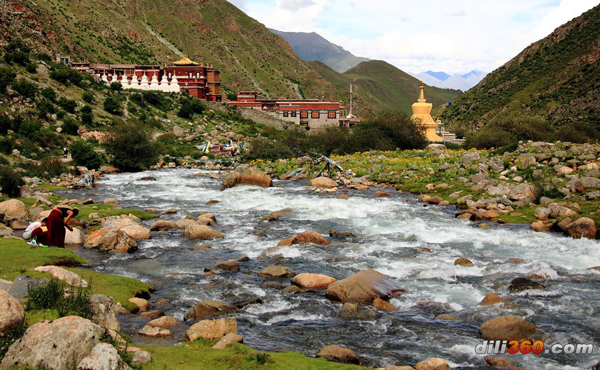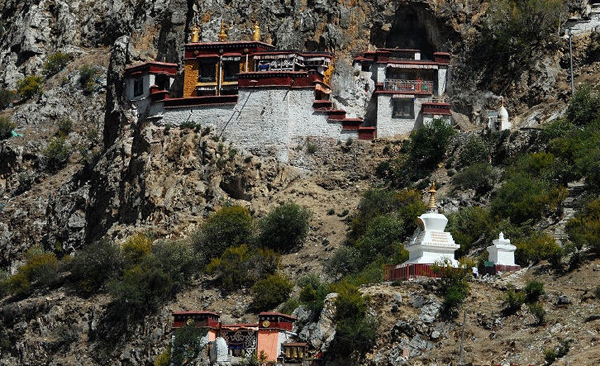Tibet is a sacred place for Buddhists. On the north ring line of Tibet, there are some monasteries that pilgrims and tourists must visit, of which some are the starting point of Lhasa, the regional capital of Tibet, some is the largest Buddhist temple in the world and some is the place where the reincarnation of living Buddha begins.

Chubu Monastery: the real paradise and Mandala [Photo/ dili360]
Chubu Monastery: the real paradise and Mandala
Religious status: Main Temple of Karma Kargyu sect (the black Cap Lineage)
Age of foundation: 1187 AD
Most prominent feature: the reincarnation of the Living Buddha starts in this temple.
Temple treasures: "Buddha living in the air" (it is said the silver statue made by Karmaba the eight for his master suspended in the air for seven days after figuration). The temple was founded by the first Karmaba and now it has been the seat of the Karmaba of the seventeen. The reincarnation of the Living Buddha started here.
The main hall of Tsurphu Monastery is dominated by statues of Sakyamuni and the relics of the Sixteenth Karmapa Lama-the murals depict the successive Karmapa lamas. There are the bowl and stick of the founder of the Kargyu sect, and "Kanjur" writen with the juice of gold and silver. In a cave of the sacred mountain behind the temple, the first Karmaba used to live. From the 10th day to the 12th in every sixth month of the Tibetan calendar, the temple would hold religious activities such as Buddha's painting unfolding, and there are also some entertainment activities to celebrate Guru Padmasambhava's birthday. On the second day, there would be some competitions such as bullfighting, horse racing and so on.

Zhayaba Monestery: the holy land of Lhasa [Photo/ Baidu]
Zhayaba Monestery: the holy land of Lhasa
Religious status: Nyingma (Red Sect) monastery, one of Tibet's four major places at which Buddhist masters practiced meditation
Age of foundation: 7th century AD
Most prominent feature: caves and monasteries combined.
Zhayaba teems with small temples. The most important of these is the Zolhakang, where the Tubo king Songtsan Gambo's Tibetan concubine, Mamsa Trizun, worshipped the statue of Sakyamuni, the founder of Buddhism. In 8th century, to promote the buddhism, Trisong Detsen invited the Guru Padmasambhava from India. During his meditation in Zhayaba, Padmasambhava found 108 practice holes. Since then, it has become a important place for Tantra. In 11th century, it had become an important ashram for the Kadam sect. In 1647, the fifth Dalai Lama found the Gelug monastery and in 18th century, a Tantra monetary of the Gelug sect was set up.
Now, there are caves for practicing meditation, in which many important people used to live, such as Sontzen Gampo and so on. It is said people once dug out Termas.
